While the Richmond City Council majority and multiple elected officials, including Senator Nancy Skinner, Supervisor John Gioia, and EBRPD Directors Coffey and Echols, continue to focus on “saving” Point Molate, there has not been a peep from them about saving the predominant cultural feature of Point Molate, the 300,000 square feet of buildings constituting the Winehaven Historic District, once the epicenter of the California wine industry.
They have been all about the flora and the fauna, eelgrass, raptors, native plants and even vanished but significant cultural resources, including the Chinese shrimp camp and prehistoric middens. But nothing about Winehaven which still exists and is slowly decomposing.
The Judgment on Claims Between Plaintiffs Guidiville Rancheria of California and Upstream Point Molate, LLC, and Defendant City of Richmond states in paragraph 24:
City shall bear all expenses of maintaining and securing the Property, until the Development Areas are sold to a third party.
The City of Richmond is not in compliance with the Judgement because it is neither maintaining nor securing Point Molate.
The buildings constituting the Winehaven Historic District, which is listed on the National Register of Historic Places, are over 100 years old and have not had the benefit of any significant maintenance at least since the Navy left over 27 years ago.
The wood frame dwelling units are exhibiting severe exterior deterioration due to water damage and wood decay. The roofs are significantly past their expected useful life, with many leaking and causing damage to structure and interiors.
The roofs of other buildings, significantly Buildings 1, 2 and 6 are also leaking. There is ongoing masonry damage to Building 6. Parts of Buildings 1, 2 and 6 have long since fallen in due to neglect and water damage.
Sump pumps in Buildings 1, 2 and 6 are either not working or are at risk due to deterioration, vandalism, theft and neglect.
These buildings are invaluable and irreplaceable.
Security at Point Molate is ineffective at best and non-existent at worse. There is no active contract for Point Molate Security. Allied Universal previously had a contract with the City, but it was transferred to Winehaven LLC (SunCal) when they assumed responsibility as a provision of the DDA when their entitlements were granted. Even then, the contract was only for 1600 to 0800 hours. There has been no security during the day. According to Allied Universal, they have not been paid in seven months and are owed about $80,000.
On August 19, 2022, I was able to enter and walk freely through the residential area and access cottages.
The fences enclosing areas off limits to the public are damaged and breached at multiple locations, and gates are often left open for extended periods. Even with fences intact and gates closed. Point Molate is not secure without at least one 24/7 security guard. Electronic surveillance could help but does not exist. An individual who so desires can easily enter the fenced areas of Point Molate and roam at will.
Theft and vandalism occur on a regular basis.
On July 13, 2022, Craig Murray wrote:
RPD arrested two individuals that apparently cut through fencing on the north end of the Beach Park and accessed this Drum Lot 1 location at the base of the Pt Molate Pier. Image is of building 69 and point to entry.
Pt Molate Caretaker assisted RPD in observing and reporting two individuals that were subsequently caught and placed under arrest by RPD.
On July 14, 2022, Craig Murray reported:
Perps are burning wires, materials in this vacant building (Pump House Building 69)…This building experienced another break-in, vandalism

Figure 1 - Vandalism and theft at Building 69

Figure 2 - Damaged gate

Figure 3 - Damaged fence

Figure 4 – Permanently open gate at north end of Point Molate

Figure 5 - Main gate open three days in a row

Figure 6 - Opening in fence provides access to housing area
The Richmond Municipal Code includes prohibition of Demolition by Neglect (15.04.303.140.E), and the lack of maintenance at Point Molate constitutes Demolition by Neglect.
Prevention of Demolition by Neglect. 1. General Obligation. The owner, lessees and any other person in actual charge or possession of an historical resource shall prevent demolition by neglect.
There are consequences (15.04.303.150):
- Any person who violates a requirement of this article or fails to obey an order or permit issued pursuant thereto shall be guilty of a misdemeanor.
- Any person who constructs, alters, removes or demolishes a historic resource or Landmark in violation of this article shall be required to restore the building, object, site or structure to its appearance or setting prior to the violation to the extent such restoration is physically possible. Any action to enforce this provision may be brought by the City or any other interested party. This civil remedy shall be in addition to, and not in lieu of, any criminal prosecution and the penalty or other remedy provided by law.
There is also a requirement for the Zoning Administrator to take a proactive role (15.04.303.140.D):
- Notice to Comply. If the Zoning Administrator determines that a historic resource or any other property in an -H District or any designated Landmark is being neglected and subject to damage from weather or vandalism, the Zoning Administrator shall meet with the owner or other person having legal custody and control of the historic resource or Landmark to discuss with them ways to improve the condition of the property. If no attempt or insufficient effort is made to correct any noted conditions thereafter, the Zoning Administrator may issue a Notice to Comply requiring the owner or other person having legal custody and control of the historic resource or Landmark to take action to require corrections of defects in the subject property in order that such historic resource or Landmark may be preserved in accordance with this section, except if the property owner can present clear and convincing evidence to the Zoning Administrator that his/her ability to improve the condition of the property is constrained by limited financial resources of other immediate and substantial hardship. If a financial or other hardship is found to exist, the Zoning Administrator shall make a written finding to that effect which specifies the facts relied upon in making such a finding and withdraw the order to comply until such time that the work needed can be accomplished.

Figure 7 - Windows broken out at Winemaker's Cottage

Figure 8 - Windows broken out and front door open at Winemakers's Cottage
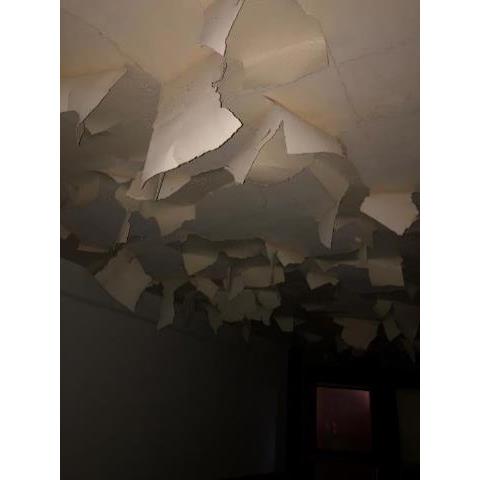
Figure 9 - Water damage to interior of Winemaker's Cottage
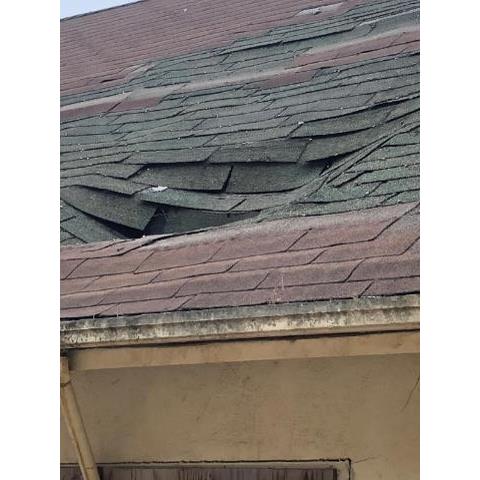
Figure 10 - Roof caved in at cottage, extensive interior water damage
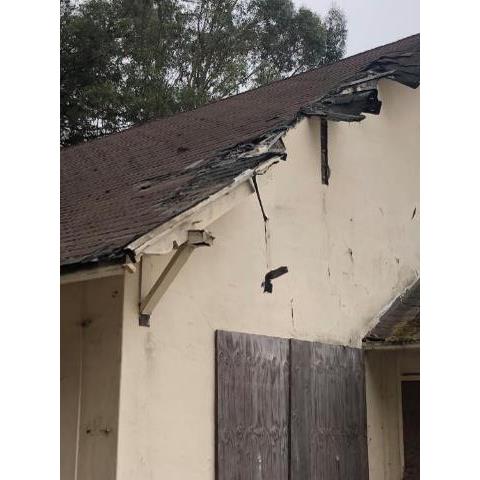
Figure 11 - Roof breached at cottage, extensive interior damage

Figure 12 - Front porch collapsed at cottage
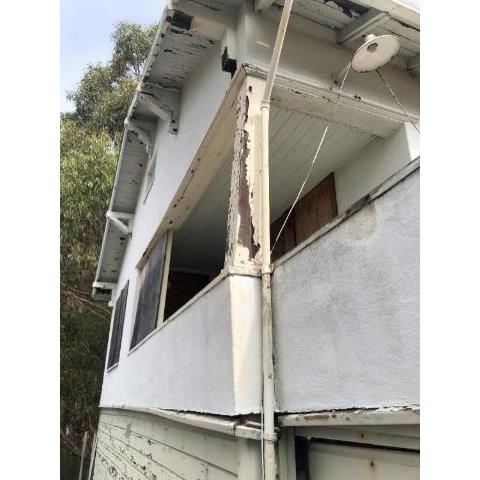
Figure 13 - Column damaged at cottage

Figure 14 - Siding missing at cottage
In addition to building maintenance, there is an issue with vegetation maintenance. There at least four invasive exotic species that dominate the landscape at Point Molate and are continuing to proliferate, outcompete and supplant native species:
Large infestations threaten California’s native coastal ecosystems by crowding out native plants, particularly in sensitive coastal dune areas (Cowan 1976). In addition to its effect on native plant diversity, jubata grass can reduce the aesthetic and recreational value of natural areas. In cut-over coastal redwood forests in northern California, jubata grass suppresses reestablishment of seedling conifers (Madison 1992). It is a significant weed problem in forestry operations and conservation areas in other countries, particularly New Zealand and Australia (Gadgil et al. 1984, Harradine 1991). In forests, jubata grass can outcompete seedling trees and retard their establishment and growth. It creates a fire hazard with excessive build-up of dry leaves, leaf bases, and flowering stalks. Large clumps can complicate fire management activities by blocking vehicle and human access and by becoming fire hazards themselves. The sawtoothed leaves can cause injury to humans.
- French broom (Genista monspessulana C (=Cytisus monspessulanus; G. racemose))
French broom currently occupies approximately 100,000 acres in California (D. Barbe, pers. comm.). It displaces native plant and forage species, and makes reforestation difficult. It is a strong competitor and can dominate a plant community, forming dense monospecific stands. In an experiment in New Zealand French broom had a higher growth rate than any other broom species found in California, reaching an average height of more than 4.5 feet (141 cm) in two growing seasons. Since it can grow more rapidly than most trees used in forestry, it shades out tree seedlings in areas that are revegetated after harvest.
French broom foliage and seeds are toxic, containing a variety of quinolizidine alkaloids, especially in young leaves (Montlor et al. 1990). In some livestock, ingestion of plant parts can cause staggering followed by paralysis (McClintock 1985). Foliage can cause digestive disorders in horses (Parsons 1992). Infestations of broom degrade the quality of habitat for wildlife by displacing native forage species and changing microclimate conditions at soil levels. French broom is believed to be responsible for reducing arthropod populations by one-third in Golden Gate National Recreation Area (Lanford and Nelson 1992). It burns readily and carries fire to the tree canopy layer, increasing both the frequency and intensity of fires. French broom along roadsides obstructs views, requiring expensive ongoing road maintenance. This species establishes a dense, long-lived seedbank, making it difficult to eradicate.
- Fennel (Foeniculum vulgare)
Fennel will invade areas where the soil has been disturbed and can exclude or prevent reestablishment of native plant species. It can drastically alter the composition and structure of many plant communities, including grasslands, coastal scrub, riparian, and wetland communities. It appears to do this by outcompeting native species for light, nutrients, and water and perhaps by exuding allelopathic substances that inhibit growth of other plants (Granath 1992, Colvin 1996, Dash and Gliessman 1994). It develops dense, uniform stands. On Santa Cruz Island fennel can achieve 50 to 90 percent absolute cover and reach heights of ten feet (Brenton and Klinger 1994). Once established, fennel is tenacious and difficult to control. Because of its prolific seed production and seed viability, a long-lived seedbank can build up rapidly.
Most impact assessment for fennel has focused on native plants, but fennel’s value to animals is unknown. Grazers will feed on early-season regrowth, and feral pigs will seek out and eat the roots, but mature stems are generally not used as food. Birds and rodents eat the seeds.
Fennel stand development and successional patterns are poorly understood, especially with regard to persistence. It is unclear whether fennel stands are an edaphic climax, or whether another plant community will replace them after several decades. In parks and preserves where fennel removal is part of a restoration program, transitional communities will occur after fennel is removed, but these may be dominated by other non-native species (Brenton and Klinger 1994). Klinger and Brenton (in prep. and in review) found there was a significant increase in native herbaceous species shortly after removal of fennel, but the areas quickly became dominated by non-native grasses.
- Tasmanium blue gum (Eucalyptus globulus)
Within groves, biological diversity is lost due to displacement of native plant communities and corresponding wildlife habitat. Abundance and diversity of understory vegetation is dependent on stand density. Understory establishment is inhibited by the production of allelopathic chemicals and by the physical barrier formed by high volumes of forest debris consisting of bark strips, limbs, and branches. The fuel complex formed by this debris is extremely flammable, and under severe weather conditions could produce drifting burning material with the potential to ignite numerous spot fires. Because stringy bark is carried away while burning, eucalyptus forests are considered the worst in the world for spreading spot fires. The Oakland hills firestorm was both intense and difficult to control because of the many stands of eucalyptus. Individual trees growing near structures or in public use areas are hazardous because of the potential for branch failure. Stature and growth form are distinctive and unlike native tree species, which compromises the visual quality of natural landscapes.
All are considered a public nuisance under RMC Chapter 9.50
9.50.090 - Nuisances specified.
It is declared unlawful and a public nuisance for any person owning, leasing, occupying or having charge or possession of any premises in this City to maintain such premises or to permit such premises to be maintained in such a manner that any one or more of the conditions or activities described in the following subsections are found to exist:
(a) The keeping, storage, depositing, or accumulation on the premises of rubbish which poses a risk of harm to the public or constitutes visual blight or reduces the aesthetic appearance of the neighborhood or is offensive to the senses or is detrimental to the use and enjoyment of nearby properties or reduces nearby property values;
(b) Property on which weeds exist outside of a managed landscape or garden area where such plants are purposefully cultivated, propagated, and controlled; or where weeds or other vegetation pose a risk of harm to the public, or constitute visual blight, or reduce the aesthetic appearance of the neighborhood, or are offensive to the sense, or are detrimental to the use and enjoyment of nearby properties, or which reduce nearby property values.

Figure 15 - Andean pampas grass, jubatagrass (Cortaderia jubata)

Figure 16 - French broom (Genista monspessulana C (=Cytisus monspessulanus; G. racemose))

Figure 17 - French broom (Genista monspessulana C (=Cytisus monspessulanus; G. racemose))

Figure 18 - Fennel (Foeniculum vulgare)
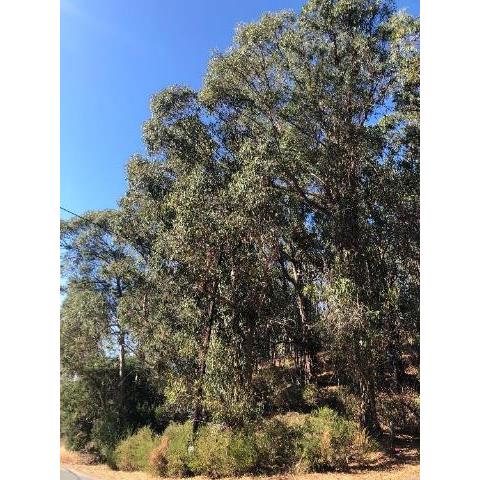
Figure 19 - Tasmanium blue gum (Eucalyptus globulus)
|

